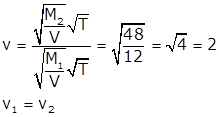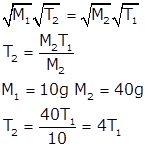Class 9 MAHARASHTRA STATE TEXTBOOK BUREAU Solutions Science Chapter 12 - Study of Sound
Study of Sound Exercise Exercise
Solution 1
a. Sound does not travel through vacuum.
b. The velocity of sound in steel is greater than the velocity of sound in water.
c. The incidence of thunderstorm in daily life shows that the velocity of sound is less than the velocity of light.
d. To discover a sunken ship or objects deep inside the sea, SONAR technology is used.
Solution 2
a. The roof of movie theatre and a conference hall is curved because the sound after reflecting from the ceilings should reach every corner of the hall uniformly.
b. Reverberations occurs due to multiple reflections. In house full of furniture and other materials does not allow reverberations to occur. While the empty and closed house allows multiple reflection of sound. Thus, the intensity of reverberation is higher in a closed and empty house.
c. The classrooms are designed in such way that the walls are less than 17.2 m from each other. Because of this, the reflection from wall reaches our ears before 0.1 s which is the minimum time required for the echo to be heard. Thus, we cannot hear the echo produced in a classroom.
Solution 3.a
The repetition of sound due to reflection of it from hard surface is called echo.
Factors affecting echo are:
a. The minimum distance between the source and reflector should ne 17 m.
b. Size of reflector should be large enough as compared to wavelength of sound.
Solution 3.b
Golghumat has central dome which stands without any support. The sound produced here gets reflected throughout the dome producing the echo at least three or four time in a second. If the surroundings inside the architecture is silent, then the echo would be heard for at least seven to 10 times.
Thus, central dome is main reason for production of multiple echoes in Golghumat.
Solution 3.c
The rays from the Sun are parallel and when these rays fall on the concave mirror, they get converged to single point on focal plane of the mirror.
Thus, a lot of heat is produced at that point. Now, if paper is placed at that point to get image of the Sun, the paper gets burnt as large amount of heat rays gets concentrated at single point.
Solution 4
The sound absorbing materials are used on roofs and walls of auditoriums, halls, theatres.
The sound absorbing materials are used in these places because sound reverberations are highly undesirable in these places.
Solution 5.a
Let temperature at which velocity of air becomes 344 m/s be T°C
The increase in velocity of sound in air from 0 °C to T °C = 344 - 332 = 12 m/s
Velocity of sound in air increases by 0.6 m/s for 1 °C rise in temperature
For 1 m/s increase in velocity of sound in air, the temperature should rise (1/0.6) °C
For 12 m/s increase in velocity of sound in air, the temperature should rise by (12/0.6) °C = 20°C
Thus, temperature at which the velocity of air becomes 344 m/s = 20°C - 0°C = 20°C
Solution 5.b
Let the distance between Nita and the source of lightning be x.
Speed of sound in air = 340 m/s
Time taken by sound to reach = 4s
x = 340 x 4 = 1360 m
Solution 5.c
1. Time to hear first echo = 4 s
Distance travelled by sound in 4 s = 360 x 2
Speed of sound = 360 x 2/4 = 180 m/s
2. Time taken to hear sound echo = 4 s + 2 s = 6 s
Distance travelled in these 6 s = 2 x
Speed of sound in air = 180 m/s
Thus, 2 x = 180 x 6
x = 540 m
Distance between walls = 540 + 360 = 900 m
Solution 5.d
The velocity of sound in a gas is related to the density of gas as,
![]() …
(1)
…
(1)
And velocity of sound in a gas is related to the temperature of the gas
![]() … (2)
… (2)
From (1) and (2)

Now two bottles given are identical i.e., volumes of gases are same.
Let the volume of bottle be V.
Let M1 and M2 be the masses of gases in the bottles A and B and v1 and v2 be the velocity of sound in two bottles respectively.
Since the temperature of gas in both the bottles are same.
Let that common temperature be T.
Thus,

Thus, the sound travels 2 times faster in bottle B as compared to bottle A.
Solution 5.e
Mass of the gas in the bottle A = 10 g
Mass of gas in bottle B = 40 g
Velocity of sound in gas is related to density of gas as,
![]() … (1)
… (1)
![]() … (2)
… (2)
From (1) and (2)



Thus, it can be concluded that the temperature of bottle B is 4 times the temperature of A.

